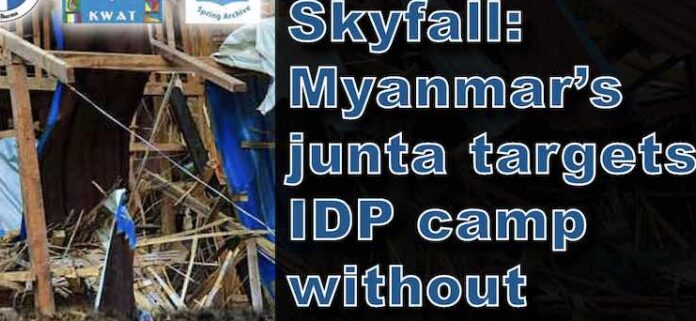Migration and Human Trafficking Program
The Anti-Trafficking Program started as a result of documentation and research into the trafficking of women and children in 2003 and 2004. This program has continued to collect data on human trafficking from Kachin State, Burma, and published its findings in two main reports: “Driven Away” in 2005 and “Eastward Bound” in 2008 Our ultimate goal is to reduce the volume of trafficked women and children from Kachin and Northern Shan State and to make a real contribution to the rehabilitation of trafficked victims.
Objectives
- To raise awareness among local communities about trafficking that women and girls can better protect themselves from trafficking and that local Kachin authorities will develop policies and systems that will protect and promote the rights of trafficked women and girls
- To provide a range of support services to the victims of human trafficking and those vulnerable to trafficking, including safe shelter, medical and mental health services, education and vocational training, and seed funding for income generation
- To work extensively among Kachin communities inside Burma to deliver awareness trainings about trafficking, help rescue trafficked women, offer them support in a Crisis Centre and shelter in Safe Houses, and provide vocational training.
Anti-Trafficking Sub-Program
1. Crisis Support Centre
In 2005, KWAT started the Crisis Support Centre for trafficked children and women on the China-Burma Border. The Centre not only provides emergency assistance to the trafficked women and girls but also assists other crisis women, who have suffered from sexual violence and other forms of violence against women. Support will be provided to women of any ethnicity or origin. Types of support provided at the Centre including food, medical costs, counseling, and travel costs to return home.
2. Safe Houses
KWAT runs two safe houses on the China-Burma border to provide long-term shelters to girls and women in crisis, including those who have been trafficked in the past. Clients at the shelter are provided with shelter, food, health care, counseling, and skills training.
3. Vocational Training
In 2007, KWAT began providing vocational training to trafficked women and girls on the China-Burma Border. The aims of this program are to provide vocational training to trafficked women and to allow them to generate income for themselves and their families in their own communities, without a need to migrate to work and put themselves in danger of human trafficking. Training in skills such as weaving, sewing, and handicraft production, with an emphasis on traditional Kachin products, and education on basic rights are provided.
4. Awareness Raising on Trafficking
KWAT organizes a regular outreach program to raise awareness of trafficking in Kachin communities inside Burma. KWAT also produced Kachin language cartoon books, awareness-raising song CD, pamphlets, and posters aimed at preventing trafficking and distributed them to local communities, cooperating with local community network groups.






